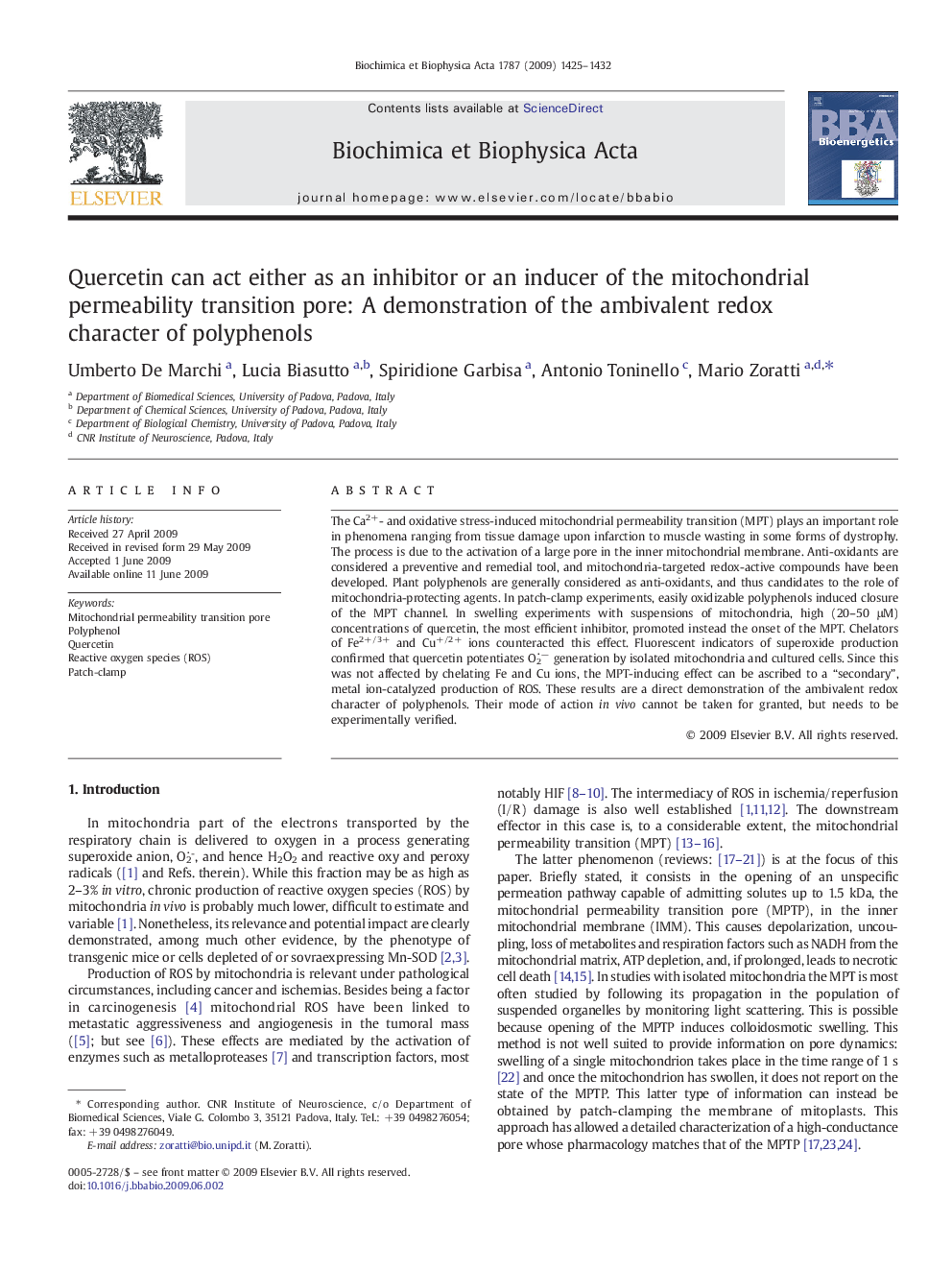| Article ID | Journal | Published Year | Pages | File Type |
|---|---|---|---|---|
| 8299046 | Biochimica et Biophysica Acta (BBA) - Bioenergetics | 2009 | 8 Pages |
Abstract
The Ca2+- and oxidative stress-induced mitochondrial permeability transition (MPT) plays an important role in phenomena ranging from tissue damage upon infarction to muscle wasting in some forms of dystrophy. The process is due to the activation of a large pore in the inner mitochondrial membrane. Anti-oxidants are considered a preventive and remedial tool, and mitochondria-targeted redox-active compounds have been developed. Plant polyphenols are generally considered as anti-oxidants, and thus candidates to the role of mitochondria-protecting agents. In patch-clamp experiments, easily oxidizable polyphenols induced closure of the MPT channel. In swelling experiments with suspensions of mitochondria, high (20-50 μM) concentrations of quercetin, the most efficient inhibitor, promoted instead the onset of the MPT. Chelators of Fe2+/3+ and Cu+/2+ ions counteracted this effect. Fluorescent indicators of superoxide production confirmed that quercetin potentiates O2â generation by isolated mitochondria and cultured cells. Since this was not affected by chelating Fe and Cu ions, the MPT-inducing effect can be ascribed to a “secondary”, metal ion-catalyzed production of ROS. These results are a direct demonstration of the ambivalent redox character of polyphenols. Their mode of action in vivo cannot be taken for granted, but needs to be experimentally verified.
Keywords
Related Topics
Life Sciences
Agricultural and Biological Sciences
Plant Science
Authors
Umberto De Marchi, Lucia Biasutto, Spiridione Garbisa, Antonio Toninello, Mario Zoratti,
